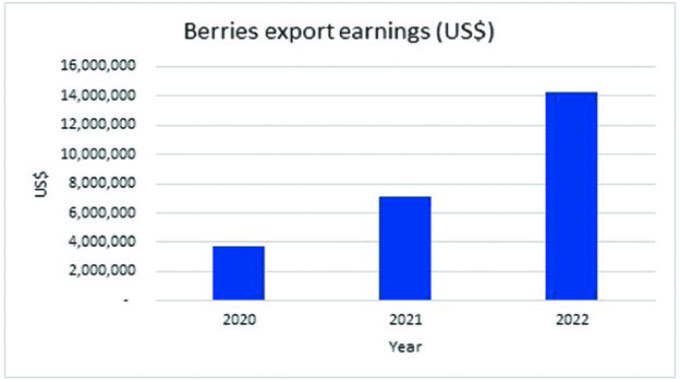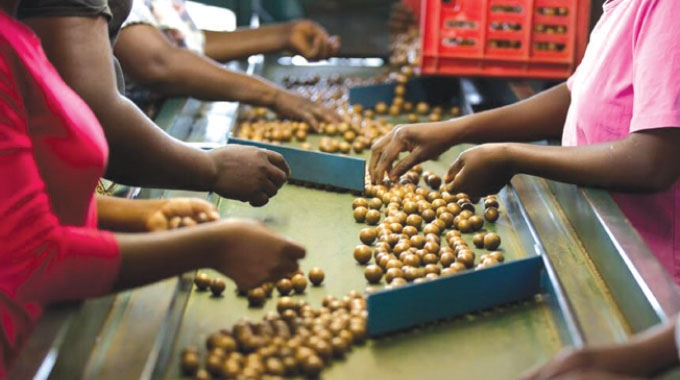Blueberry leads in horticulture production with 69pc growth

Edgar Vhera-Agriculture Specialist Writer
PRODUCTION of horticultural crops grew 18 percent from 2, 3 million tonnes in the 2021/22 season to 2, 8 million tonnes in the 2022/23 season with blueberry leading at 69 percent growth.
The recently released second round crop, livestock and fisheries assessment report (CLAFA – 2) shows that all horticulture crops, with the exception of tea and peas recorded positive growth.
Blueberry is leading the pack with a 69 percent growth in production from 3 420 to 5 787 tonnes. This was partly accomplished by a 49 percent increase in area from 570 hectares in 2021/22 season to 643ha in 2022/23 season.
The 50 percent increase in yield from six tonnes per hectare to nine also helped in achieving the fate.
The berries sector has been growing over the past few years with statistics from the Zimbabwe National Statistics Agency (ZimStats) showing that export volumes increased 92 percent from 1, 7 million kilogrammes in 2020 to 3,3 million kilogrammes in 2021. The statistics also show a 93 percent surge in earnings from US$3, 7 million in 2020 to US$7, 1 million in 2021.
The volume of berries exports rose 41 percent from 3, 3 million kilogrammes in 2021 to 4, 7 million kilogrammes in 2022. Earnings from berries exports grew 99 percent from US$7, 1 million in 2021 to US$14, 2 in 2022. The average export price shoot 41 percent from US$2, 14 per kg in 2021 to US$3, 01 in 2022.
Zimbabwe Berry Growers Association vice chairman Mr Stuart Torr, recently maintained that blueberries production was the major cause of the increased production within the berries sector, though in coming years the trend was unlikely to continue.
“Yield from blueberry plants increase as they mature from year one, doubling the output in year two, reaching their optimal in year three and maintaining that yield from year four subject to good management.
“As new varieties and market demands change the current crop of established plants may be removed before reaching 10 years,” said Mr Torr.
Horticultural Development Council (HDC) chairman Mr Stanley Heri recently pointed out that increased earnings in the berries sector were due to growth in production of blueberry with young plants moving into the optimal maturity bearing stage.
Leafy vegetables, excluding cabbage, recorded the second largest growth in production with 35 percent increase from 194 152 to 261 960 tonnes. Area under production and yield increased 26 percent and seven percent respectively.
Cabbages occupied the third spot with a 29 percent increase in production from 471 555 to 607 392 tonnes. There was a 21 percent increase in area under production and a seven percent rise in yield.
Among the shakers was peas (mangetout and sugar snap) that dropped 29 percent in production from 3 976 tonnes in the 2021/22 season to 2 832 tonnes in the 2022/23 period. The area that was committed to peas production fell 17 percent from 568ha in 2021/22 period to 472ha in the 2022/23 season while yield dropped 14 percent from seven to six tonnes per hectare.
Among the causes of the decline was increase in freight charges as a result of Covid-19 restrictive measures, as well as depressed market demand. Cold chain infrastructure required to maintain quality was also affected by excessive electricity load shedding negatively impacting on production and export.









Comments